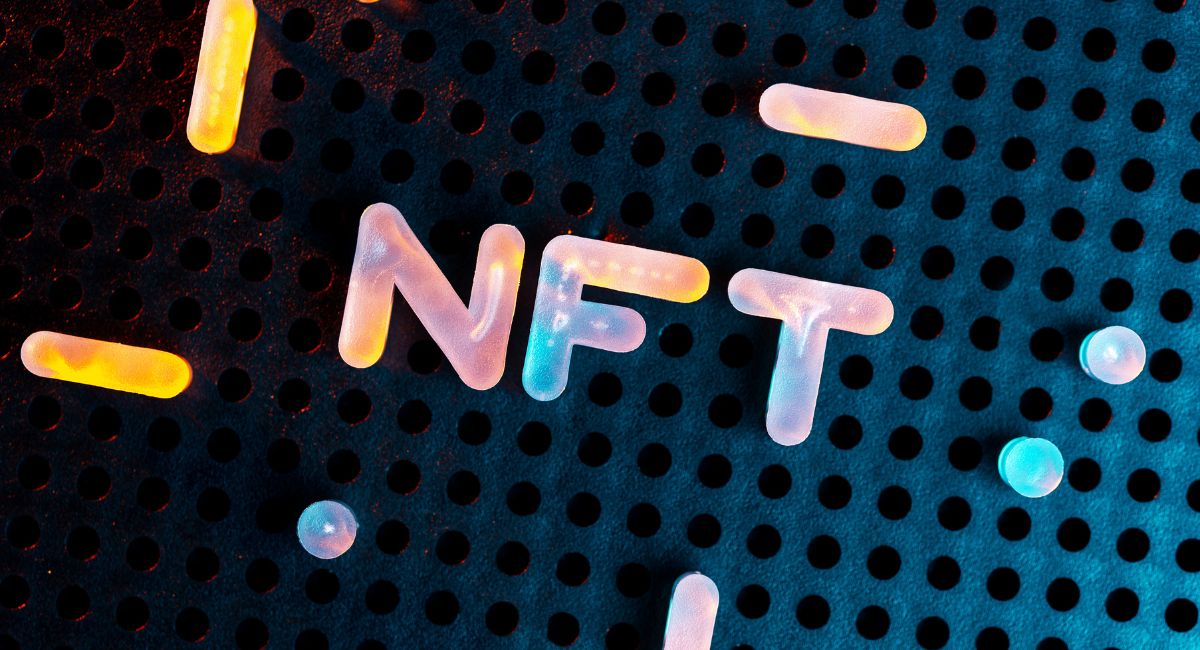What Are NFT Wearables: Top 10 Fashion Brands for the Metaverse

The metaverse is not just a virtual space for gaming and social interaction; it’s also a place for self-expression and fashion. In this digital realm, NFT wearables have emerged as a fascinating trend, allowing users to deck out their avatars with unique and fashionable items. NFT wearables are digital clothing, accessories, and cosmetics that can be bought, sold, and traded as non-fungible tokens (NFTs) on blockchain platforms. Let’s delve into this exciting phenomenon and explore 10 fashion brands that are making waves in the metaverse.
Understanding NFT Wearables

NFT wearables, or Non-Fungible Token wearables, are digital fashion items that exist exclusively within virtual environments, such as the metaverse. NFTs, as you may know, are blockchain-based tokens representing ownership of unique digital or physical assets. In the case of wearables, these assets are fashion items like clothing, accessories, skins, and cosmetic enhancements for avatars.
Key characteristics of NFT wearables include:
- Uniqueness: Each NFT wearable is one-of-a-kind or part of a limited edition, making it distinct from other virtual fashion items.
- Ownership: NFTs provide true ownership, allowing users to buy, sell, and trade these digital fashion items as they would physical clothing in the real world.
- Authenticity: The blockchain verifies the authenticity and provenance of NFT wearables, ensuring that users are getting genuine virtual fashion items.
- Scarcity: Limited editions and unique designs create scarcity, driving value and desirability among users and collectors.
- Interoperability: Some NFT wearables are designed to be interoperable across different virtual worlds and metaverse platforms, allowing users to carry their fashion choices with them.
Also, read – The Role Of UI/UX Designers In The World Of NFTs And The Metaverse
10 Fashion Brands for the Metaverse

Here are 10 fashion brands that have embraced the concept of NFT wearables, adding a touch of style and uniqueness to the metaverse:
1. Aether Apparel:
- Overview: Aether Apparel is known for its futuristic and high-tech clothing designs. In the metaverse, they offer NFT wearables that blend fashion with advanced technology, creating a stylish and functional virtual wardrobe.
For the one who has it all, get them something no one else has: AETHER + Veldt Artist Helmets. All proceeds from the collaboration benefit Riders for Health, a nonprofit that provides healthcare to rural villages in Africa.https://t.co/QW4VD2LzCO pic.twitter.com/0WQ3395DvO
— AETHER Apparel (@aetherapparel) December 14, 2020
2. The Fabricant:
- Overview: The Fabricant is a digital fashion house that specializes in creating entirely virtual clothing collections. They have collaborated with various artists and brands to design unique NFT wearables.
3. Sneaker Pimps:
- Overview: Sneaker Pimps, a well-known sneaker and streetwear brand, has ventured into the metaverse with NFT wearables. Their virtual sneakers and streetwear items have gained popularity among fashion-forward avatars.
4. Gucci:
- Overview: The luxury fashion brand Gucci has entered the metaverse by offering NFT wearables. Their virtual fashion items, including digital sneakers and accessories, showcase their commitment to innovation and style.
5. Prada:
- Overview: Prada has also embraced NFT wearables, creating digital fashion pieces that combine elegance and avant-garde design for metaverse enthusiasts.
GM 🫡
Based on @opensea, my @adidasoriginals X @Prada NFT by @zachlieberman which I acquired on @SuperRare goes against its terms and is delisted.
Can someone from either of the involved parties enlighten me please? pic.twitter.com/PK6IPn5igI
— Mondoir (@mondoir) December 6, 2022
6. Off-White:
- Overview: Off-White, a streetwear brand founded by Virgil Abloh, has made its mark in the metaverse with exclusive NFT wearables that appeal to fans of urban fashion.
7. Balenciaga:
- Overview: Balenciaga has released limited-edition NFT wearables, blurring the lines between high fashion and digital art in the metaverse.
8. A Bathing Ape (BAPE):
- Overview: The iconic streetwear brand BAPE has introduced NFT wearables inspired by their signature designs, allowing users to sport virtual streetwear in the metaverse.
9. Digitalax:
- Overview: Digitalax is a blockchain-based fashion platform that collaborates with artists and designers to create NFT wearables. Their focus on sustainable fashion aligns with the growing awareness of eco-friendly practices in the metaverse.
10. VR Gardens:
- Overview: VR Gardens is an innovative metaverse fashion brand that combines the beauty of nature with digital wearables. Their NFT wearables often feature floral and botanical themes.
The Future of NFT Wearables

NFT wearables are not just a fashion statement; they represent a new form of digital art and self-expression in the metaverse. As technology continues to advance, we can expect even more creative and immersive fashion experiences in virtual worlds.
The fashion brands mentioned above are pioneering this exciting trend, but the world of NFT wearables is still evolving. Designers, artists, and fashion enthusiasts are exploring the possibilities of digital fashion, pushing the boundaries of creativity in the metaverse. Whether it’s virtual streetwear, luxury fashion, or eco-conscious designs, NFT wearables offer a glimpse into the future of fashion and self-expression in the digital realm.
The future of NFT (Non-Fungible Token) wearables represents an exciting intersection of technology, art, fashion, and blockchain innovation. NFTs have gained immense popularity as unique digital assets, and the concept is extending to the world of wearables, opening up a new dimension of personal expression, ownership, and digital interaction. Here’s a comprehensive exploration of the future of NFT wearables:
1. Defining NFT Wearables: NFT wearables refer to digital or virtual items that are tokenized as non-fungible assets on a blockchain. These items can include virtual clothing, accessories, skins, or any other form of digital attire that users can purchase, own, and showcase within virtual or augmented reality environments.
2. Fusion of Fashion and Technology: NFT wearables bring together the worlds of fashion and technology. Designers and artists collaborate to create unique and aesthetically pleasing digital fashion items that users can own as NFTs. This fusion allows for unprecedented creativity and self-expression, challenging traditional boundaries of physical fashion.
3. Virtual Fashion Shows and Events: With the rise of NFT wearables, virtual fashion shows and events become a new norm. Fashion designers can showcase their digital creations in virtual environments, reaching a global audience. Attendees can participate, interact, and even purchase these virtual wearables as NFTs, turning fashion events into unique and immersive experiences.
4. Ownership and Scarcity: The core concept of NFTs, including wearables, lies in ownership and scarcity. Each NFT wearable is a one-of-a-kind digital asset, verified and secured on the blockchain. This sense of exclusivity and ownership appeals to collectors and enthusiasts who value unique, limited-edition items.
5. Interoperability Across Virtual Worlds: NFT wearables are designed to be interoperable across different virtual worlds and platforms. Users can showcase their digital attire in various metaverse environments, creating a seamless experience regardless of the virtual space they inhabit. This interoperability enhances the utility and value of NFT wearables.
6. Integration with AR and VR Technologies: The future of NFT wearables involves integration with augmented reality (AR) and virtual reality (VR) technologies. Users can visualize and interact with their digital attire in real-world environments through AR applications or immerse themselves in virtual realms using VR devices. This integration enhances the immersive and interactive nature of NFT wearables.
7. Collaborations between Artists and Brands: Artists, fashion designers, and brands collaborate to create exclusive NFT wearables. These collaborations not only drive innovation in digital fashion but also bridge the gap between the traditional and digital realms. Iconic brands may release limited-edition digital versions of their physical products as NFT wearables.
8. Dynamic and Programmable Wearables: NFT wearables can go beyond static digital assets. They can be dynamic and programmable, allowing for changes in appearance, animations, or even functionality. This dynamic nature adds a layer of versatility and personalization, giving users the ability to adapt their digital attire to different occasions or moods.
9. Social and Cultural Impact: NFT wearables have the potential to influence social and cultural norms. Users can express their identity, beliefs, and affiliations through their digital attire. The cultural significance of digital fashion evolves as it becomes a medium for self-expression in the virtual space.
10. Sustainability in Digital Fashion: NFT wearables contribute to the sustainability of fashion by reducing the environmental impact associated with traditional clothing production. Digital fashion eliminates the need for physical materials, manufacturing processes, and transportation, aligning with the growing demand for eco-friendly and sustainable practices.
11. Secondary Markets and Trading: NFT wearables can be traded in secondary markets, creating a new economy around digital fashion. Users can buy, sell, or trade their digital attire, fostering a vibrant marketplace where the value of NFT wearables can appreciate based on factors such as rarity, artist reputation, and cultural significance.
12. Regulatory Considerations and Intellectual Property: As NFT wearables gain prominence, regulatory considerations and intellectual property rights become crucial. Clear frameworks are needed to address issues such as copyright, ownership disputes, and the legal status of virtual assets. Establishing a legal foundation is essential for the sustainable growth of the NFT wearable ecosystem.
13. Education and NFT Literacy: With the rise of NFT wearables, there is a growing need for education and literacy around NFTs. Users, artists, and creators should understand the technical aspects of blockchain, smart contracts, and the implications of owning digital assets. Educational initiatives play a vital role in fostering responsible participation in the NFT space.
14. Evolving Technological Standards: The development of standards for NFTs, including wearables, is an ongoing process. Interoperability, security, and user experience standards will likely evolve to create a more seamless and standardized environment for the creation and use of NFT wearables across different platforms and virtual worlds.
15. Community Engagement and Virtual Events: NFT wearables foster community engagement through virtual events, conferences, and social gatherings. Users can showcase their digital attire, attend virtual fashion meetups, and participate in a global community that appreciates and values digital fashion as a form of expression.
Conclusion
NFT wearables have introduced a captivating blend of fashion and technology into the metaverse, revolutionizing the way we express ourselves in virtual worlds. These digital fashion items, represented as NFTs, offer users the chance to personalize their avatars with unique, limited-edition pieces from renowned fashion brands and innovative digital fashion houses.
The 10 fashion brands highlighted in this article are just the beginning of what promises to be a vibrant and ever-evolving virtual fashion landscape. As the metaverse continues to expand and embrace new possibilities, we can anticipate even more creative collaborations, unique designs, and immersive fashion experiences in the digital realm.
NFT wearables not only cater to fashion-forward avatars but also provide exciting opportunities for designers, artists, and creators to explore the limitless potential of digital fashion. As the metaverse grows in popularity, the concept of NFT wearables is set to become an integral part of how we express our individuality and style in the digital age. So, whether you’re looking for luxury, streetwear, or eco-conscious designs, the metaverse offers a fascinating canvas for the future of fashion.




























































